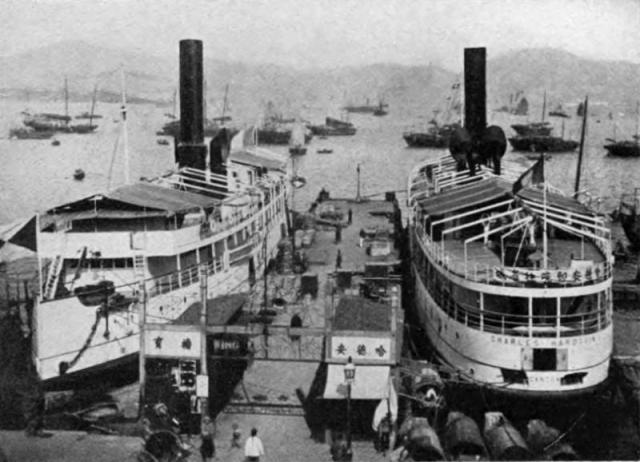The area around Wing Lok Street in Sheung Wan was originally a waterfront and the location of the Wing Lok Street Pier. This area earned the nickname of "Triangle Pier” due to its triangular shape of land. With land reclamation and the growth of transshipment trade, Wing Lok Street Pier gradually lost its importance and was demolished in 1970s.

The pier was, in fact, a long bridge where cargo ships parked on both sides. Two cranes on the bridge lifted heavy items, but much of the work was manual. Laborers, often Chaoshan people from China seeking a livelihood, were responsible for loading and unloading goods. The used of coolie often referred to these workers responsible for physically-demanding jobs. Once all the goods were neatly stacked, the cargo owners would collect them, item by item, loading them onto vehicles or storing them in warehouses.

Triangle Pier served not only as a goods transport hub, but also as a center for human trafficking. Men were sold as laborers, women as concubines or prostitutes. The practice referred to as "piglet trading." With the abolition of slavery in some regions of the UK, France, and the USA, cheap contract labor was sought for physically demanding jobs in plantations, docks, warehouses, construction sites, coal mines and other fields. During the American Gold Rush in 19th century, a huge demand for labor to mine gold emerged, and Chinese laborers were targeted. Their circumstances echoed the dehumanization of African slavery, as they too were deceived, abducted, and sold. The Chinese term for these trafficked men and women is "pigs," originating from the filthy and cramped conditions they suffered during transport and the inhumane way they were treated, much like livestock.
.jpeg)
Chinese labor played a significant role in shaping California's infrastructure during the 1860s, fueled by the Gold Rush and the resulting economic boom. It attracted many Caucasians from the East Coast. However, an economic depression in the 1870s led to a lack of high-paying jobs as the white immigrants had hoped for, with Chinese laborers being accused. In 1882, the local government enacted the "Chinese Exclusion Act," prohibiting Chinese laborers from entering the region, accelerating the decline of the "piglet trade." By the first half of the 20th century, this form of human trafficking had essentially disappeared.
.png)
The Triangular Pier is part the tale of how Hong Kong connected the world but with a darker narrative of human suffering and exploitation. The demolishment of the pier embarked the transformation in trade and human rights’ situation. Hong Kong did not stop its integration with other regions. It is an undeniable mark in history and we could only see the debris of history in Jao Tsung-I Academy. By acknowledging the past, society can strive to ensure such atrocities never happen again.
